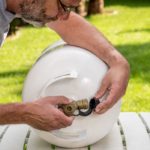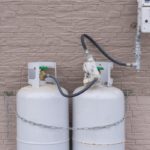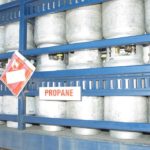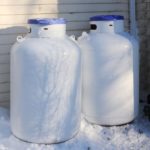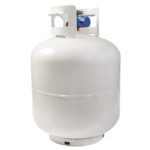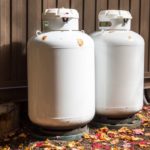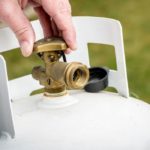The propane tanks that so many people use to fuel their furnaces, stovetops, and outdoor grills are pretty easy to find. You can get them at hardware stores, grocery stores, and even on Amazon. But just because it’s easy to get a new tank doesn’t mean you shouldn’t reuse the one you already have.
Propane tanks that aren’t damaged, expired, or dented can be refilled. Check the tank for the manufacture date before refilling (depending on the country, most tanks last 10 to 12 years). For smaller tanks, simply exchanging them is the quickest, easiest, least expensive solution.
Refilling a propane tank is the cheapest way to proceed when it runs out of fuel. And as long as you check your tank carefully to make sure it’s in good condition, refilling is a safe option. Let’s take a look at how you can determine if a tank can be refilled and the various benefits of doing so.
Should You Get Your Propane Tank Refilled? (Or Exchanged?)
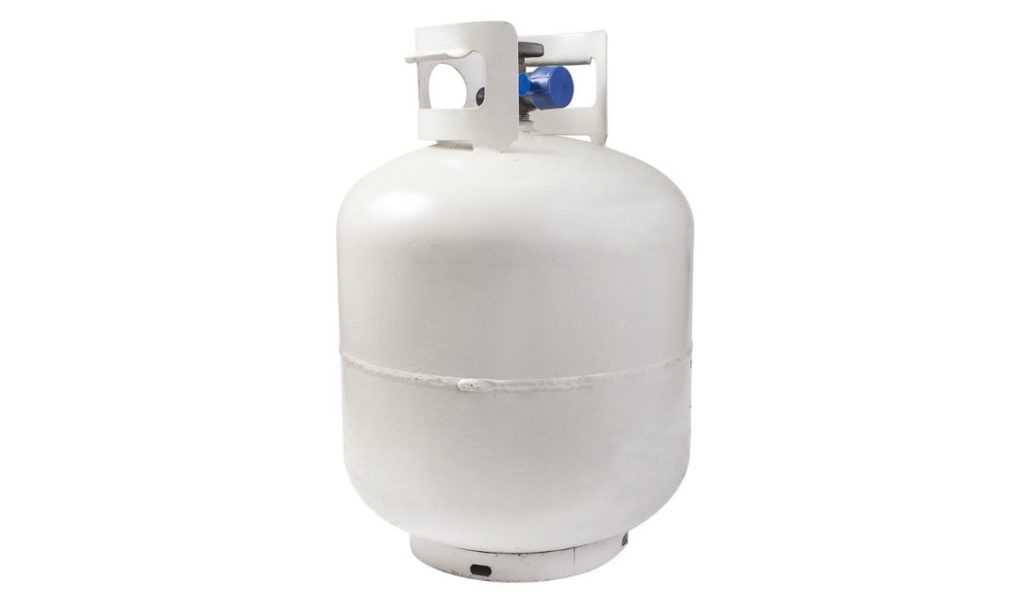
If you’re using or thinking about getting propane tanks, one of the most common questions that arise is: Can you refill them or do you have to replace them? You can indeed refill and reuse propane tanks and oftentimes, it’s even recommended to do so…that’s what they’re designed for! You can take smaller propane tanks to a local propane exchange kiosk or store (they’re stocked at most large gas stations, walmarts, etc.).
If you want to take your propane tank somewhere to get it refilled, that’s a little more complicated, but not impossible.
It’s generally suggested to refill a tank unless it’s past its expiration date — for that you can refer to the date stamp left on the tank by the manufacturer. Another reason to refill tanks is that when they are replaced or exchanged, they’re usually only filled up to about 15 pounds, even though the tank can safely hold 20 pounds. When you go for a refill, you get the full capacity.
Back in the day, it wasn’t as easy to get a hold of refilling services; however, there are more options. With that said, while there are more options, and it is cheaper, you may still have to wait a bit to get the tank refilled.
Despite all of these benefits, there are some downsides to having your propane tank refilled. These include:
- There are usually fewer options for refilling; the market is tilting towards tank exchanges.
- There might not always be trained employees ready to assist you, which means sometimes you might have to wait longer for them to turn up.
- There is minor spillage and wastage when refilling; however, this remains well under one pound’s worth.
How Can I Check if My Propane Take Is Refillable?
Most types of propane tanks can be refilled. There are a few things that you should generally look out for when going to refill your propane tanks:
Tank Lifetime
The lifetime of a propane tank is very important; it will help decide whether or not your tank is refillable. Most propane tanks in the US are good for 12 years, while in Canada, it’s 10 years.
Always check the expiration date. The easiest way to inspect this is by checking under the collar area or the handle of the tank. Over here you should find a manufacture date or when the tank was last certified. If your tank has reached the end of its lifetime, then you should not go for a refill.
However, that doesn’t necessarily mean that the tank is useless. In fact, if it’s been kept in good cognition with little or no dents you can always take the tank and get it recertified. Recertified tanks can be used for another 3 to 7 years, and even 12 years in some cases, depending on the tank and type of certification.
Read the Markings
People often struggle to read or understand the markings on the propane tanks. To give it a try, look near the handles where you will find a series of stamped marks. These stamps include the origin of the tank, as well as its expiration date.
Furthermore, each and every tank is stamped with its very own unique identification number. This helps authorities and law enforcement keep track of the tanks and where they’re being transported.
Recertification dates can also be found on the tank.
With all of this information, you can work out how much time is remaining until you must take this tank to the relevant authorities.
How to Tell When Your Tank Needs to Be Refilled
So, you’ve been using your propane tank and now you’re wondering whether it needs a refill or not. This is yet another common question people have when they start using propane tanks. Here are some clear signs you need to look out for to help determine whether the tank needs a refill:
The Tank Feels Light: While this may not work for residential tanks, since they are too heavy to pick up, it can certainly work for the small tanks that you use for your BBQ grill. When the tank is getting low on propane, you will be able to tell the difference in weight immediately and this can be your first sign that you might need a refill.
The Gauge Indicates the Tank Is Low: Residential propane tanks have gauges that indicate how much propane is remaining and whether or not it needs to be replaced.
Although smaller BBQ tanks may not come with gauges, you can certainly get your own, like this DozyAnt Propane Tank Gauge (on Amazon), and install it yourself. It might seem like a hassle; however, it makes it very easy to identify how much propane is left and when you should refill it.
The Flame Starts to Flutter: Another strong indication that the propane tank is running out or needs a refill is that the flame starts to flutter. Whether you’re using the propane for your grill or for a stove, if you notice fluttering, it this means the propane is low.
What Types of Propane Tanks Can’t Be Refilled?

While refilling is a great option, it’s important to understand that not all kinds of propane tanks can be refilled, and some can only be refilled by certified professionals.
If a tank is extremely dented or in a bad condition, to the point where it may seem like it’s not safe, it’s best to avoid refilling it and get a professional’s opinion. This also goes for tanks that might be ruptured.
Tanks with a capacity of more than 200 gallons should also only be refilled by certified professionals.


